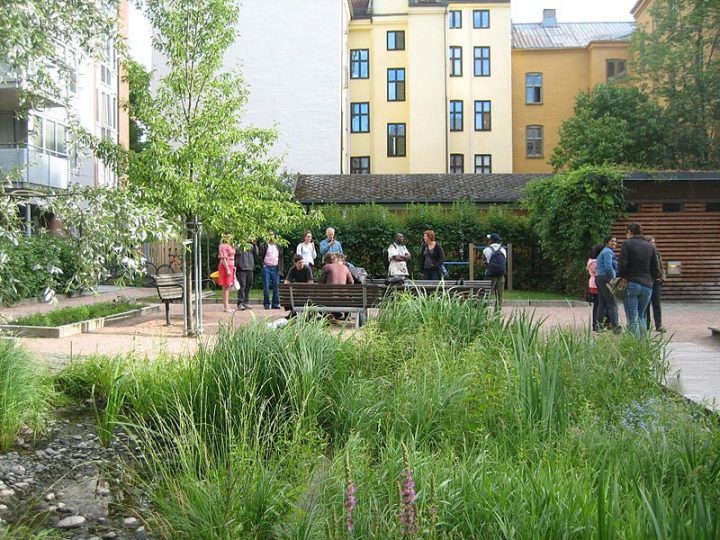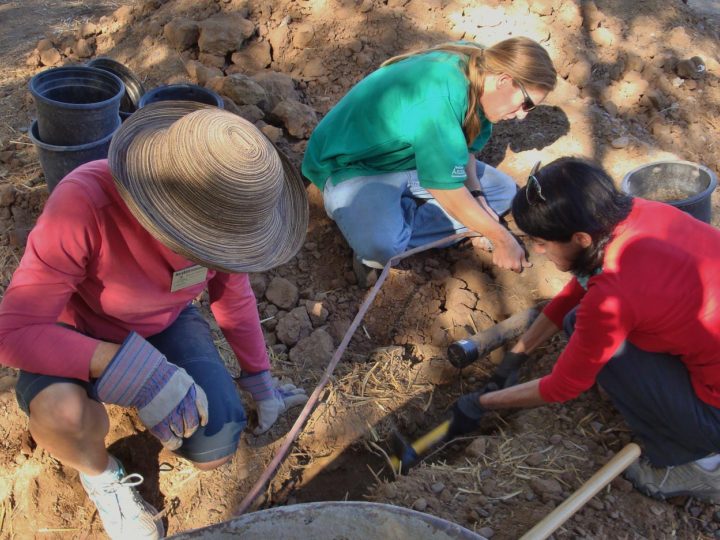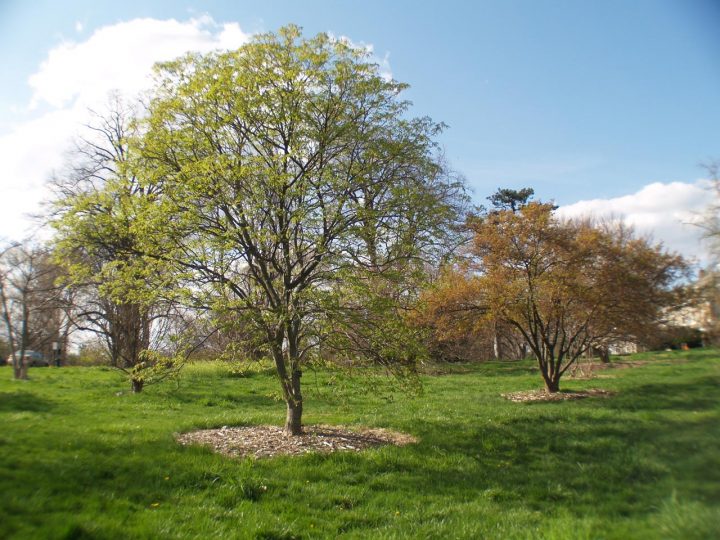
Laundry to Landscape
Save water and money with this sidelot greywater harvesting system.
Cost
People
Upkeep
Experience
Stormwater
Sun/Shade
The Laundry to Landscape lot design can save water and money with its greywater harvesting system. This lot design requires that you work with an experienced professional to disconnect your washing machine waste water, or ‘greywater,’ and reroute the water to your garden through pipes and trenches. Instead of traveling underground through the city’s hard pipes, this graywater can stay on site, and irrigate the trees and plants growing on your lot.
This lot design requires a bit of household participation as, for example, you might need to select a different type of (phosphate-free) laundry detergent to ‘feed’ your lot with. The Laundry to Landscape will save water while providing a beautiful landscape amenity.
Ideal Location: Residential lot in full sun to part sun (next to an occupied house is ideal).
Lot Type
Special Lot Condition
DFC 20 Year Land Use Area
Cost
The estimated cost of the Laundry to Landscape is moderate and based on utilizing volunteer and professional labor, following the permit requirements, plumbing materials and the trees. The Field Guide recommends reviewing the San Francisco Greywater Design Manual (Available for free at http://sfwater.org) to determine exact plumbing and irrigation costs for your household—this is a resource you can use in conversations as you speak with potential plumbers for this project. The estimated price of the landscape alone less than $2500. The cost assumes that residents have access to basic safety gear and garden tools.
Habitat Benefits
Other Benefits
Green Infrastructure
This lot design can manage the greywater of a household, which reduces the burden on underground pipes. Planting trees on your lot will create multiple benefits in every neighborhood, including their ability to soak up water during storm events. This lot design includes a mix of suggested species to ensure resilience. Installing the Laundry to Landscape lot design is a great way to contribute to the health of our Great Lakes waterways and ecosystem.
Vegetation and Visibility
The tree trunk spacing of this lot design creates moderate visibility from the street to the alley. This lot design provides some degree of privacy; if both neighbors participate, the Field Guide recommends this lot design as a good way to split or share a lot.
Falling Hazard
The trees in this lot design are located to ensure that basement root intrusion and potential falling hazards do not occur, and that the city’s plan review requirements are followed. Unmaintained trees create a hazard to neighboring structures. We recommend working with a certified arborist as your trees mature. Please note the trees on the plan are shown at a mature spread.
Lifespan
Planting Type
Most Interesting Season
Other Consideration
Build
The installation of this lot design will require professional assistance for the first few steps of this lot design, unless you have experience with, or a desire to learn about, plumbing. The San Francisco Greywater Design Manual has relevant information on the irrigation and plumbing installation instructions. The Field Guide identifies volunteer opportunities if you, with the help and support from friends, family or neighbors would like to construct the planting portion of this lot design. This design will require finding and transporting your trees, as well as digging the holes for your trees. The older and larger the trees you plant, the more we recommend speaking with a professional or an educational group. The most transportation intensive aspect of the volunteer part of this lot design will be transporting your trees. If you choose to take the entire project on yourself, an additional transportation need will include trips to acquire the correct plumbing parts. If you do not feel able to tackle the volunteer aspect of this lot design, a professional can construct the entire project
Build Time Estimate
Everyone tackles projects at different speeds; however, if your trenches are dug and your greywater is rerouted, the tree planting aspect of this lot design will take most folks only a weekend to complete. If you are taking on the plumbing and the tree planting, we recommend two weekends.
Build Difficulty
Number of People Needed
Neighbor Labor
Time Taken to Build
Build Season
Transportation Intensity
Permit Requirements
Upkeep
Check irrigation components regularly to ensure they are working properly. If so, there will be no need to water trees. The Field Guide recommends connecting with an arborist or taking a workshop on tree health and maintenance. The Greening of Detroit offers a great Citizen Forester program to interested residents.
Seasonal Upkeep Levels
- Spring: Low
- Summer: Low
- Fall: Low
- Winter: Low





